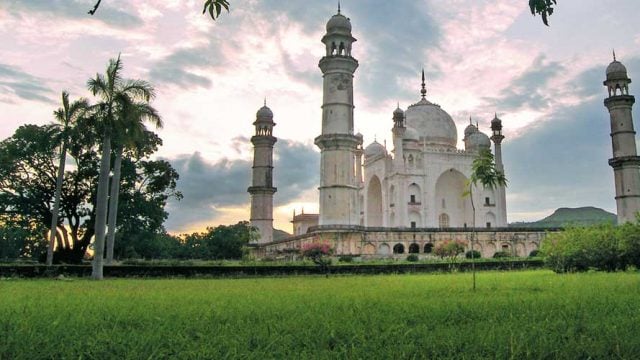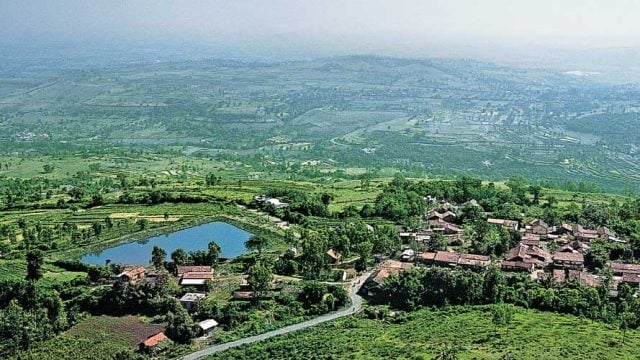Tadoba Andhari Tiger Reserve (TATR) is one of the most sought after tiger-sighting and-watching destinations

ORIENTATION
Nagpur is the most convenient location from which to visit, as the city is well connected by air, rail and road to the rest of the country. Chandrapur (25 km) is also an option, if the approach is by road or train. There are three entry gates from Nagpur – Kolara, Navegaon and Pangadi – and three from Chandrapur – Moharli, Khutwanda and Zari.
Entry per vehicle ₹750–1,000 (for 6 pax) Timings 6.00–11.00am & 3.00–6.00pm, Closed Tuesdays Guide fee ₹300
HISTORY
Situated in the coal rich mining district of Chandrapur, this reserve was a favourite haunt of a bygone era when hunting was sport; professional hunting outfits such as Tigerland Shikars and Allwyn Cooper operated here. However the alarming drop in tiger numbers countrywide forced the government to impose a total ban on hunting. The first effort to recognize the value of this area as a habitat of immense importance was the reserve’s notification back in 1955, but the park genuinely came into its own as a sanctuary in 1986, when it was expanded to an area covering 506 sq km. It got boosted to a larger area in 1993 encompassing 622 sq km and was officially baptized the Tadoba Andhari National Park. Its most important asset is its ever present water resource in a geographical area that is a byword for water scarcity. It has a wealth of water bodies and lakes, both big and small, and the whole area is drained by the Irai and Andhari rivers, with the Tadoba draining into the Irai reservoir. The forest cover is predominantly teak and bamboo, plus plenty of verdant grassland. A host of native fruit trees and other forest produce species abound aplenty, and the mahua, tendu, amala, ber and jamun trees are some that are generously distributed across the landscape.

THINGS TO SEE
This rich forest is home to an incredible wealth of life forms. Of course, every tourist wants that one great tiger sighting – a legitimate desire – but Tadoba Andhari is much much more than that. There is also a flourishing animal kingdom of other species, an avian world full of birds, the permanent and migratory, plus reptile and insect life in abundance. So for everyone, the discerning lover of nature or tourist scoring off his ‘must see’ list, there is variety and substance to behold and enjoy. The animal kingdom embraces the apex predator – the tiger – plus leopard and lesser cats, which are shy animals by nature and include the Indian civet and jungle cat. The park has a healthy population of sloth bear, a plucky animal constantly on the lookout for termites and fruit. The dhole packs are the predators that even the big cats treat with a degree of respect. The furry fireballs of energy and limitless stamina are the epitome of guile and teamwork tirelessly chasing and bringing down prey. They are quite capable of stealing a leopard’s kill.
Needless to say, the reserve and its predator species will not survive without a healthy and growing prey base. Foremost of the herbivore species is the massive gaur, the Indian wild ox, which move in herds that range between 15 to 20 in number and are a magnificent sight to behold, with mature adults tipping the scales close to 1,000 kg! They are strong and heavily muscled and their black colouring shimmers in the jungle light. The sambar, chital and the nilgai make up the bulk of the carnivore prey base. All chital herds are linked with the ubiquitous langur, which is a regular companion of the herd. Langur troops can often be seen in the trees feeding on the fruits and flowers while the chitals forage on the ground and reach up on their hind legs for tender leaves of the low branches. The langurs make great sentinels given their elevation in the tree tops and raise an alarm at the first sign of danger, they are also a provider of fresh fruit and flowers as they feed in their trademark untidy manner, generously dropping the same for the chitals to enjoy. It is a long established association and a good display of teamwork. Given that the reserve has an abundance of bamboo and grassland, the larger ungulates have expanded to very healthy numbers which in turn impacts the tiger population.
While reams can be written about the mammals of this sanctuary because they are so obviously visible on the forest floor and most visitors spot them fist, there is however a wealth of avian life. All it takes is a bit of patience, a bird guidebook and binoculars. The varieties seem to come out of nowhere; birds of prey, aquatic birds, fruit-eating birds are all part of this beautiful area. The numerous water bodies alone support and attract a very wide variety with the winter bringing in a host of migrants who stay for a while and then depart. The forest floor also throws up frequent sighting of the jungle fowl and the male with his sumptuous plumage and trademark half-moon tale feathers is a vivid sight indeed. Different species of owl can be glimpsed as they sit in tree hollows scrutinising the world below them. The grey-headed fish eagle can also be spotted here. Other avian residents include Indian pitta, crested honey buzzard, bronze winged jacana, orange-headed thrush and the crested serpent eagle.
WHERE TO STAY AND EAT
The best option here is Tiger Trails Jungle Lodges (Nagpur Tel: 0712- 6541327, Cell: 09822930703; Tariff: ₹10,000 per person, with meals) – a country-style guesthouse in the Chichghat Forest Valley. The luxurious Svasara Resort (Reservations cell: 09370008008; Tariff: ₹21,500, with meals and two safaris) is near the Kolara Gate. Camp Tiger Serai (Cell: 09881389437, 0952573724; Tariff: ₹6,500, with meals) is another beautiful property near Moharli Gate, with good food. The MTDC Tourist Lodge (Cell: 09579314261, 090214 80465; Tariff: ₹1,450–3,200) in Moharli Village is situated next to the Irai Lake.
Other good options include Resort Saras (Cell: 09422139353; Tariff: ₹4,000–4,500) in Moharli and Chava Kolara Resort (Cell: 09021128158, 09860001538; Tariff: ₹3,000–3,500) in Kolara Village.
|
FAST FACTS |
|
When to go November–March is pleasant but April–May (upto 46˚C) is the best time for tiger spotting. Park closed during June–July |
|
Wildlife/ Forest Dept Office |
|
Field Director Region Vidarbha Location A tiger reserve in Chandrapur District of Maharashtra Distance 138 km SE of Nagpur Route from Nagpur Via Mancherial-Chandrapur-Nagpur Road |
|
GETTING THERE |
|
Air Nearest airport: Nagpur (150 km/ 3 hrs) has good flight connections to all metros. Hiring a cab for the whole day will cost about ₹3,000 |
|
Rail Nearest railhead: Chandrapur (45 km/ 1 hr) but Nagpur (linked to all metros) has better transport options |
|
Road From Nagpur, take NH7 till Jamb and then SH 264 to Warora. Turn left to Shegaon (16 km), via Aashta, Goshri, to Khutwanda Gate. Or, you can take the district road from Warora to Moharli Gate via Mudholi. From Chandrapur, take the road to Moharli Gate. |
|
Bus State buses ply from Chandrapur to Tadoba, 3 times a day for ₹40 |
Tadoba Andhari Tiger Reserve
Vidarbha





